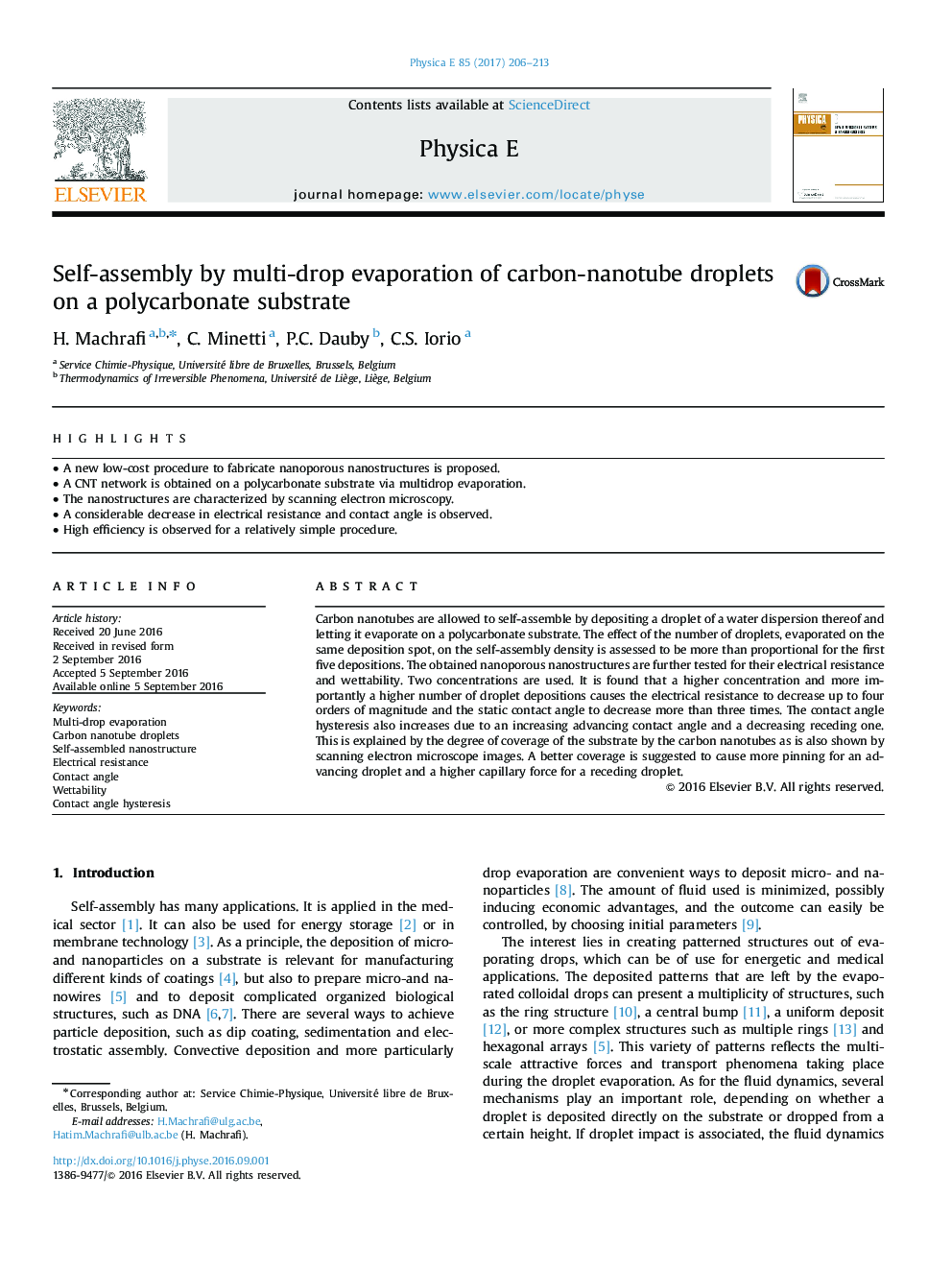| Article ID | Journal | Published Year | Pages | File Type |
|---|---|---|---|---|
| 7933951 | Physica E: Low-dimensional Systems and Nanostructures | 2017 | 8 Pages |
Abstract
Carbon nanotubes are allowed to self-assemble by depositing a droplet of a water dispersion thereof and letting it evaporate on a polycarbonate substrate. The effect of the number of droplets, evaporated on the same deposition spot, on the self-assembly density is assessed to be more than proportional for the first five depositions. The obtained nanoporous nanostructures are further tested for their electrical resistance and wettability. Two concentrations are used. It is found that a higher concentration and more importantly a higher number of droplet depositions causes the electrical resistance to decrease up to four orders of magnitude and the static contact angle to decrease more than three times. The contact angle hysteresis also increases due to an increasing advancing contact angle and a decreasing receding one. This is explained by the degree of coverage of the substrate by the carbon nanotubes as is also shown by scanning electron microscope images. A better coverage is suggested to cause more pinning for an advancing droplet and a higher capillary force for a receding droplet.
Keywords
Related Topics
Physical Sciences and Engineering
Materials Science
Electronic, Optical and Magnetic Materials
Authors
H. Machrafi, C. Minetti, P.C. Dauby, C.S. Iorio,
